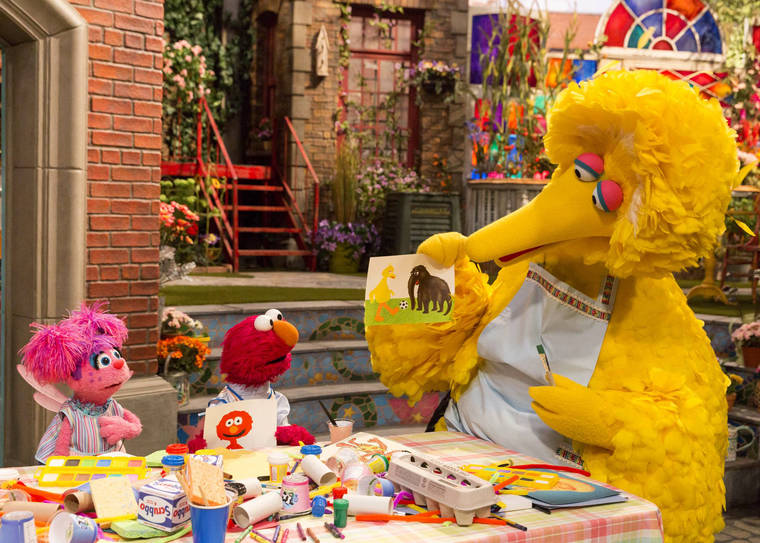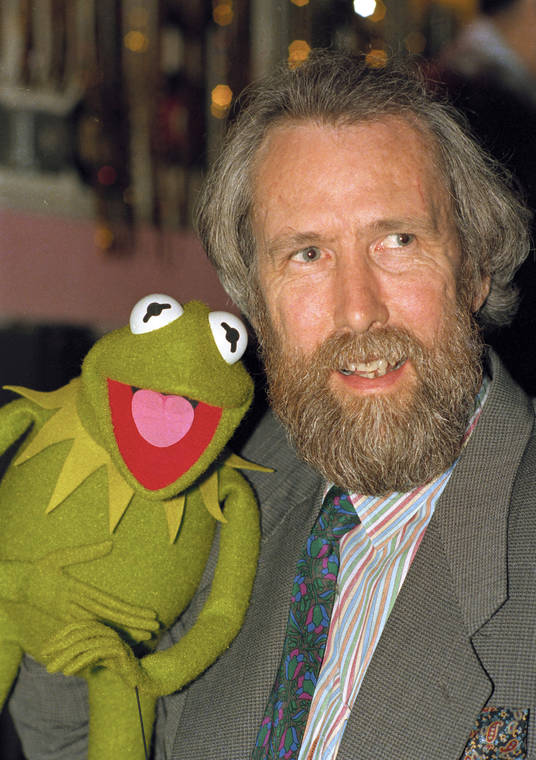NEW YORK — Fifty years ago, beloved entertainer Carol Burnett appeared on the very first broadcast of a quirky TV program that featured a bunch of furry puppets.
“Wow, Wanda the Witch is weird,” Burnett commented. And then — poof — she was gone.
That show was “Sesame Street” and Burnett, like a lot of kids, was instantly hooked. She would return to the show multiple times, including visits to demonstrate to pre-school viewers where her nose was and to smooch a rubber duckie.
“I was a big fan. I would have done anything they wanted me to do,” she said. “I loved being exposed to all that goodness and humor.”
This first episode of “Sesame Street” — sponsored by the letters W, S and E and the numbers 2 and 3 — aired in the fall of 1969. It was a turbulent time in America, rocked by the Vietnam War and raw from the assassination of the Dr. Martin Luther King Jr. the year before. The media, like today, was going through disruption.
Enter “Sesame Street” creators Joan Ganz Cooney and Lloyd Morrisett, who worked with Harvard University developmental psychologist Gerald Lesser to build the show’s unique approach to teaching that now reaches 120 million children. Legendary puppeteer Jim Henson supplied the critters.
“If they could harness that power to teach them the alphabet and their numbers as opposed to the words to beer commercials, you may be able to make a really big difference,” said Steve Youngwood, the chief operating officer of Sesame Workshop.
The show was designed by education professionals and child psychologists with one goal: to help low-income and minority students aged 2-5 overcome some of the deficiencies they had when entering school. Social scientists had long noted white and higher income kids were often better prepared.
So, it wasn’t an accident that the show was set on an urban street with a multicultural cast. Diversity and inclusion were baked into the show. Monsters and humans and animals lived peacefully together.
Bert, Ernie and the gang made an instant impression on actress Sonia Manzano. She saw a neighborhood that looked like hers. She saw people who looked like her. She would become a cast member, Maria, on the show, starring and writing for it from 1971-2015, including getting married on air.
“I was raised without seeing people of color on television. So, when I was given the opportunity to be a person of color on television, I jumped at it,” said Manzano, who is of Latino descent. “And I think I was successful as Maria because I never forgot that there could be a little kid like me watching television and forming ideas about the world.”
Over the years, “Sesame Street” has welcomed many more: It’s had puppets with HIV and in foster care, invited children in wheelchairs, dealt with topics like jailed parents, addiction and recovery, homelessness, women’s rights, military families and even had girls singing about loving their hair.
It introduced the bilingual Rosita — the first Latina Muppet — in 1991. Julia, a 4-year-old Muppet with autism came in 2017. And “Sesame Street” became the first children’s program to feature someone with Down syndrome. So important is the show that PETA recently asked for the creation of a vegan Muppet.
“We are a mirror to society here even though we’re dealing with birds and chickens and monsters,” said Matt Vogel, the puppeteer who portrays Big Bird and the Count and who grew up watching “Sesame Street.”
When actor Will Lee, who played the grocer Mr. Hooper, died in 1982, the show explained death to children. When Big Bird lost his nest to a hurricane, the community rebuilt his home. To help kids after 9/11, Elmo was left traumatized by a fire at Hooper’s store but was soothingly told that firefighters were there to help.
Celebrity appearances — starting with Burnett and now numbering 650 — aren’t just a fun component of the show, they’re part of the lesson. From Janelle Monae to Sarah Jessica Parker, from Anderson Cooper to Danny DeVito — they’re all part of an attempt to lure parents to watch as well.
“When parents watch the show with their kids, the learning is deeper because you have a conversation about what you watched together. You talk about it,” said Benjamin Lehmann, executive producer. “The parents are there to scaffold on the lessons.”
Not everyone has adored the show, especially those who grouse about federal funds going to a nonprofit that earns millions on licensing for everything from lunch boxes and toys to diapers and commercials for Farmers Insurance.
In 2015, the longtime PBS show inked a five-year pact with HBO that gave the premium cable channel the right to air new episodes nine months before they air on PBS. That prompted some criticism that Sesame Workshop favored viewers who could afford HBO over those who could not.
Before each season, educators and creators gather to align the curriculum with the latest thinking. In the past, for example, narrative stories were broken up into little chunks because the thinking at the time was that kids couldn’t follow a long story. That turns out not to be true, and “Sesame Street” now delivers 10-minute narratives.
Some shows have lasted longer — “Meet the Press” and “The Tonight Show” among them — but few have had as big a cultural impact. “Sesame Street” is shown in more than 150 countries, has won 193 Emmys, 10 Grammys and will get a 2019 Kennedy Center Honor for lifetime artistic achievement in December, the first time a television program will receive the award.


